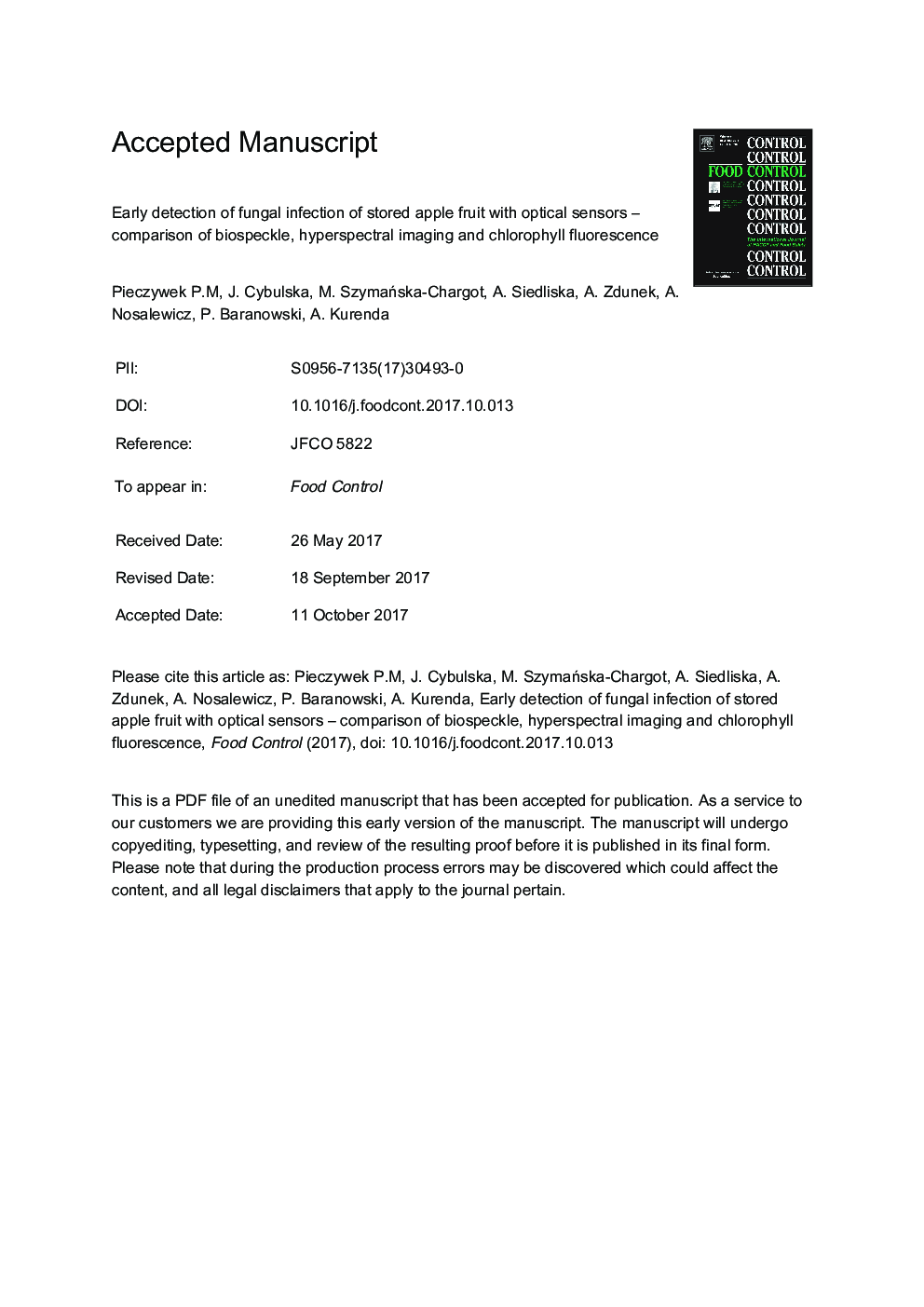| Article ID | Journal | Published Year | Pages | File Type |
|---|---|---|---|---|
| 8888231 | Food Control | 2018 | 44 Pages |
Abstract
Storage diseases of apples can lead to a considerable loss of fruit storage and post-storage quality and, as a consequence, decrease the profitability of cultivation. The timely inspection of fruit at all stages of postharvest handling allows for detection of developing disease, and gives the possibility to apply special treatment or to separate the infected apples from the healthy ones. Thus, minimizes the negative effects of diseases before they have time to fully develop. Using novel optical sensors and the artificial inoculation of apple fruit with Pezicula malicorticis, a fungus causing major storage diseases of apples - bull's eye rot, we looked for straightforward, fast and reliable methods to detect the symptoms of infection before they would be detectable by visual inspection. Our results indicate that a visual inspection allowed for the detection of the first clear symptoms of bull's eye rot 4-5 days after inoculation. While chlorophyll fluorescence, globally measured biospeckle activity and hyperspectral imaging enable statistically significant detection of infected areas as early as 2 days afterP. malicorticis inoculation. The spatial visualization of biospeckle activity revealed the development of disease with a higher level of detail than hyperspectral imaging and allowed for the earlier detection of infection than the chlorophyll fluorescence detection method.
Related Topics
Life Sciences
Agricultural and Biological Sciences
Food Science
Authors
P.M. Pieczywek, J. Cybulska, M. SzymaÅska-Chargot, A. Siedliska, A. Zdunek, A. Nosalewicz, P. Baranowski, A. Kurenda,
